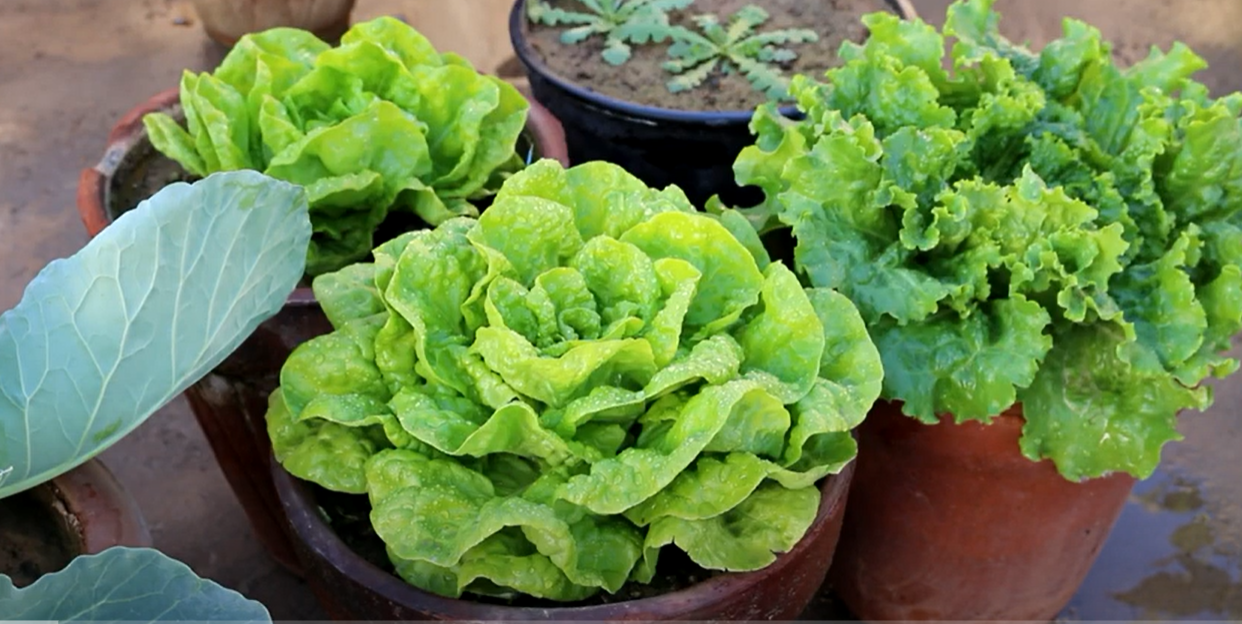Buttercrunch lettuce is a Bibb lettuce variety of the butterhead lettuce group. Buttercrunch is an easy to grow flavorful loose head lettuce with a buttery velvety texture. It is used in recipe applications such as salads, sandwiches, wraps and green juices. This lettuce is also popular with home growers because of its attractive looks, which also serve for ornamental purposes in pots and gardens. It is suitable for container growing and does not easily bolt compared to other loose head lettuce varieties.
Table of Contents
What is Buttercrunch Lettuce?
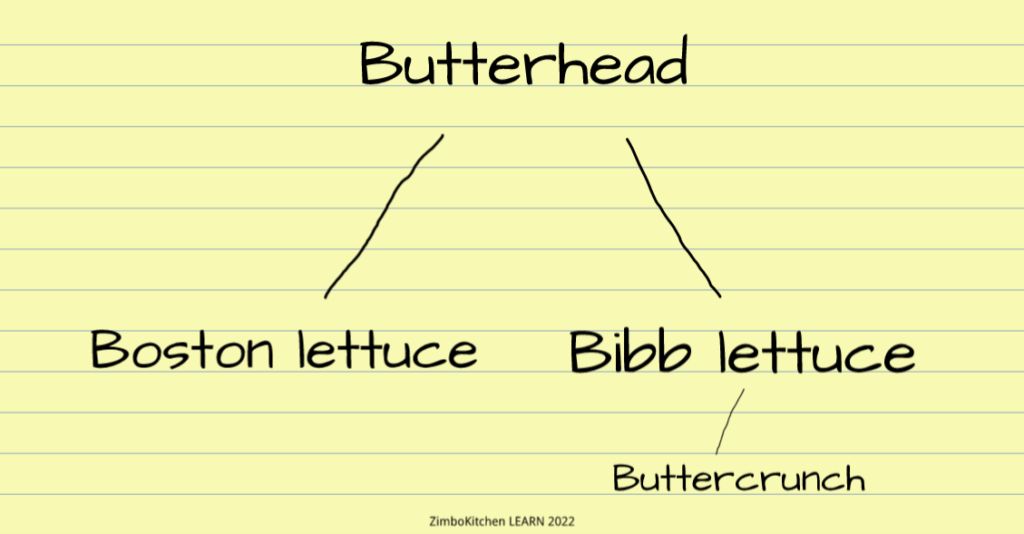
Buttercrunch is a butterhead lettuce variety which is a Lactuca sativa species of Asteraceae family. It is mostly used raw in salads and sandwiches and has a scrumptious sweet flavor. The parent lettuce cultivar of buttercrunch is Bibb lettuce, itself a subgroup of the overarching butterhead lettuce group according to Louisiana State University . The diagram above illustrates the relationship between butterhead lettuce, Boston lettuce and Bibb lettuce.
University of Maryland Extension identifies 5 overarching lettuce types which are Leaf, Butterhead, Romaine also known as Cos, Crisphead also known as Iceberg, and Endive also referred to as Chicory or Escarole. Although this last type is often treated just the same as regular lettuce, Endive is not a Lactuca sativa species. A popular Endive cultivar is frisée lettuce.
Buttercrunch Characteristics
Buttercrunch lettuce has a small fan-shaped rosette of leaves which are soft, dark green in color and upward-facing. These leaves can also be used for stuffing in recipes (see recipes section). The loose head of the buttercrunch lettuce, which never becomes tight, is surrounded by tender, pale looking leaves. This loose head does not turn bitter even in higher temperatures and is also slow to bolt.
As earlier mentioned, buttercrunch butterhead lettuce is a favorite among many consumers due to its appealing looks, taste and versatility pertaining to culinary applications. This is a cut-and-come-again leafy green which is easily cultivated in pots and containers due to its low propensity to bolt or become bitter, a weakness associated with other lettuce types. The cut-and-come-again characteristic of buttercrunch lettuce means the grower can harvest some leaves and come again later for further harvest after they regrow (see growing section).
Buttercrunch Origins
Buttercrunch lettuce is an heirloom lettuce variety which has been in existence for over 60 years. The variety was developed by George J. Raleigh, professor emeritus of vegetable crops at Cornell University. George J. Raleigh died in 1982 at age 83.
Raleigh developed buttercrunch butterhead lettuce at Cornell University, building on the original work of John M. Bibb who developed Bibb lettuce in 1865. Bibb lettuce was later named in his honor. Alongside buttercrunch, Raleigh is also responsible for developing another popular butterhead lettuce variety, the Summer Bibb.
Raleigh’s work on Summer Bibb and Buttercrunch lettuce varieties made it possible for growers to cultivate Bibb lettuce cultivar in summer months with high-quality output. Even so, one of the main characteristics of buttercrunch lettuce today remains its resilience in hot weather, maintaining its flavor and delaying bolting. In 1963, buttercrunch lettuce was awarded the esteemed All-America Selections Award (AAS).
Buttercrunch Lettuce Recipes
Buttercrunch butterhead lettuce is a flexible leafy green which can be utilized in a variety of culinary recipe preparations. It is also often a suitable alternative to other loose leaf lettuce or lettuce in general in recipes that call for lettuce or raw leafy greens. In most cases it is used raw in salads, juices, sandwiches, stuffings and as a wrap
The following are some delicious recipes to try out that use the buttercrunch lettuce vegetable.
Butterhead Lettuce with Eggplant Yogurt Recipe

This recipe produces a Middle Eastern dish suitable to serve for lunch, dinner or as a side. The recipe takes nearly an hour to make and serves 4. It has two parts, first is the smacked cucumber followed by the eggplant yogurt. For the cucumber, one burpless cucumber will be required which can be an English cucumber, Persian, Armenian or Lemon cucumber.
All these have great flavor, thin digestible skin and manageable seeds. The eggplant can be the regular purple or white eggplant if looking for something exotic. The recipe calls for a butterhead lettuce, this is ideally a buttercrunch lettuce or Boston lettuce. The lettuce will be arranged as the base on the platter upon which the dish will be spread. View Recipe.
Asparagus and Buttercrunch Butterhead Lettuce Salad Recipe

This recipe produces a salad that serves 4 in 30 minutes. It takes a total of 2 buttercrunch butterhead lettuce. Although the recipe calls for butterhead lettuce, it can also be made using any loose leaf lettuce variety. You could mix the leafy greens e.g. green buttercrunch lettuce and some purple lettuce for color.
The lettuce will need to be rinsed and dry for dressing adherence. A lettuce spinner (example) produces best results in both looks and taste. Ingredients for the salad dressing will be some olive oil, dry mustard, pepper, lemon zest, lemon juice, honey and salt. View Recipe.
Asian Buttercrunch Wraps Recipe
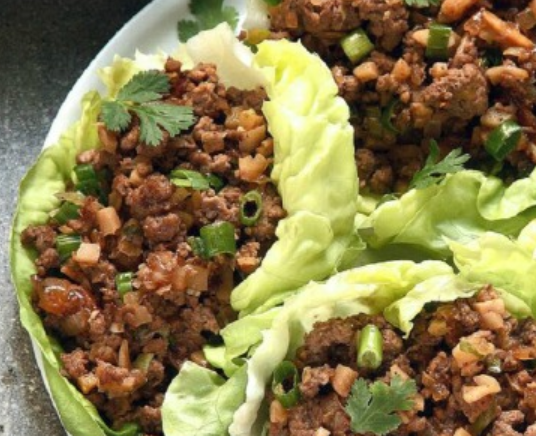
This is a scrumptious Asian recipe that produces delicious tasting wraps using lettuce leaves. Buttercrunch butterhead lettuce leaves are really ideal for this recipe because of their tender cup-like shapes. The filling will be spooned into the “cups” and wrapped like a burrito.
The recipe takes 35 minutes to make and serves 4. The ingredients that go into the filling include ground beef, onion, Asian chili pepper sauce, Asian dark sesame oil, green onions and drained water chestnuts. The lettuce leaves will be rinsed and dried before use. If not using a spinner (example) for best results, simply pat dry the leaves. View Recipe.
Buttercrunch with Cheese and Avocado Recipe
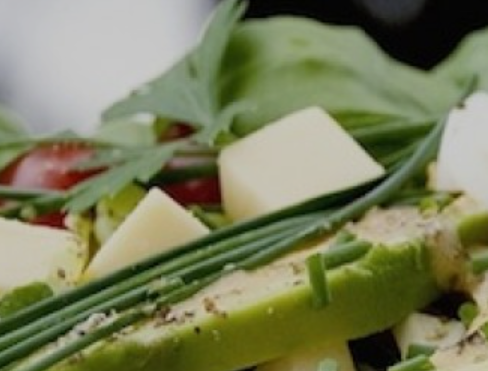
This recipe serves 4 and can be prepared as an entrée dish. It is in two simple parts, the salad and the dressing. The salad will require one head of buttercrunch butterhead lettuce. Other ingredients will be creamy cheese, tomatoes, fresh basil leaves, boiled eggs and avocados.
The dressing will be made using only three ingredients – French mustard, fresh lemon juice and olive oil. The lettuce must be washed and dried before use. By using a salad spinner to work the lettuce, the dressing will better adhere to the lettuce leaves and overall improve the quality of the salad (see salad spinner section), View Recipe.
Buttercrunch Lettuce Seeds
Buttercrunch is an easy to grow lettuce. It is also the right variety for pot or container cultivation. The seeds for this variety are also easily accessible to home growers ensuring a steady supply of fresh dietary leafy greens. The seeds are open-pollinated. They germinate in about 10 days and produce a mature crop for harvest within 65 days. See growing section for planting tips.
The following are seed suppliers in North America.
- West Coast Seeds Buttercrunch Open-Pollinated Seeds
- Buttercrunch Heirloom Lettuce Seeds via Amazon
- Johnny’s Seeds Buttercrunch Organic Lettuce Seeds
- Botanical Interests Buttercrunch Heirloom Lettuce Seeds
- Gurney’s Buttercrunch Head Lettuce Seeds
- Territorial Seed Company Buttercrunch Seeds
- Park Seed Buttercrunch Lettuce Seeds
- Burpee Buttercrunch Butterhead Lettuce Seeds
Growing Buttercrunch
Growing buttercrunch butterhead lettuce, just as most loose leaf and loose head lettuces, is easy both in containers and in the ground. Buttercrunch can be sown directly from seed or transplanted into soil that is rich, well drained, moist and slightly acidic at a pH of between 6.0 – 6.8. When sowing buttercrunch the seeds should be 1/4 inch or 0.63 cm deep and spaced at between 12 and 18 inches or 30 cm and 46 cm.
Like all lettuce, buttercrunch is a cool-season crop which, however, has superior qualities such as heat resistance and delayed bolting compared to other lettuces. Buttercrunch prefers a lot of sun but has limited tolerance of heat. Ideally buttercrunch lettuce should be cultivated during spring when the crop can access full sun at cool temperatures.
If planted in summer, the grower must ensure that the plants are not exposed to high summer temperatures. In such cases partial shade at the peak of day temperatures is necessary. This can be achieved by planting the lettuce within taller crops such as tomatoes which can effectively provide some partial shade. A shade cloth (example) could also be used to partially block the sun and reduce its impact on the lettuce.
For fast growth, the soil should be kept moist and the plants frequently irrigated or watered. Mulching with dry grass, dry leaves or plastic is effective in preserving soil moisture and also suppressing and discouraging weeds. Buttercrunch lettuce is overall pest and disease free but can be attacked by aphids, slugs, and cutworms.
Growing Buttercrunch Lettuce in Containers
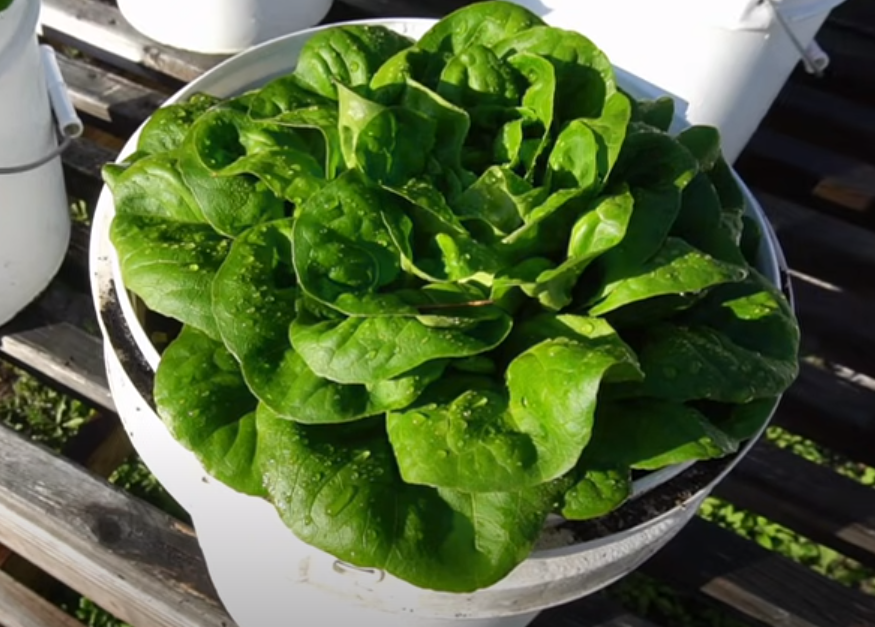
Perhaps the most exciting part about growing buttercrunch lettuce is the possibility of thriving container cultivation. As already stated, buttercrunch is one of the most recommended lettuces to grow in containers or raised planter boxes (example).
This is welcome in limited spaces and for growers who just wish to run a small portable garden according to their limited needs.
Apart from space, pots allow the grower to move the plant around the garden to an ideal spot e.g. into shade or sun at any given time. Furthermore, buttercrunch is very attractive, when grown in containers it can easily serve another useful purpose which is ornamental be it indoors or outdoors.
The minimum pot size we recommend for buttercrunch lettuce is a 1 gallon pot (example) which is typically 7″D x 8″W x 7″H. However, ideally the pot size could be 3 gallons (example) or 5 gallons (example) in size which is 9″D x 11″W x 9″H and 11″D x 15″W x 11″H respectively. In addition, the containers should come with drainage holes.
Growing lettuce in containers heightens the need to keep the soil moist, the more in summer keeping in mind that lettuce has very shallow roots and that pots drain quickly once watered. Additionally, container growing mediums tend to quickly lose nutrients due to leaching caused by frequent watering. The grower would need to keep this in mind for the purposes of replenishing the soil with necessary nutrients and also changing the soil at regular intervals e.g. once per year.
How to Harvest Buttercrunch Lettuce
Buttercrunch is a cut-and-come-again leafy green. If the whole plant is not being uprooted, there is room for multiple harvests as the plant continues to produce more leaves. Certain herbs such as basil have a similar approach when harvesting.
When to harvest buttercrunch can be subjective. It can begin at any stage the grower feels the crop is ready for picking some leaves – from microgreens (a few days after germination) to baby lettuce (about half-way to maturity). Baby lettuce is when the buttercrunch is harvested prematurely and is much smaller in size.
When grown in containers, buttercrunch can be harvested in a ring-like pattern starting with the outer suitable leaves circling inwardly. A scissors is used to clinically snip the leaves off the stalk without causing damage to the plant or other surrounding leaves.
However, regardless of which stage prior to maturity the lettuce is harvested, there is an optimal harvesting time when the butterhead lettuce is finally at its peak in attractiveness, tenderness and flavor. At this stage the plant has an aesthetically pleasing fan-shaped rosette of leaves, and the heart has a yellow-white appearance. The leaves also show no sign of disease or pest attack. From this point on, the lettuce crop becomes less and less attractive and usable to the point of bolting or going to seed.
While easy and straightforward to do, there is more to appreciate about growing lettuce in general. We recommend this detailed resource by University of Minnesota Extension called Growing lettuce, endive and radicchio in home gardens.
Conclusion
Buttercrunch lettuce is a lettuce heirloom variety that was developed out of the Bibb butterhead lettuce at Cornell University several decades ago. The variety was developed to withstand higher temperatures and also to resist early bolting. For this reason, it is one of the most favored loose head lettuces to grow for home gardeners. Buttercrunch is used mostly raw in a variety of culinary recipes. It is a flexible leafy green which is applicable in everyday dietary needs as well as special occasion dishes. Buttercrunch lettuce is easy to grow in containers and in the ground for food as well as ornamental purposes.
Recommended Good Reads:
